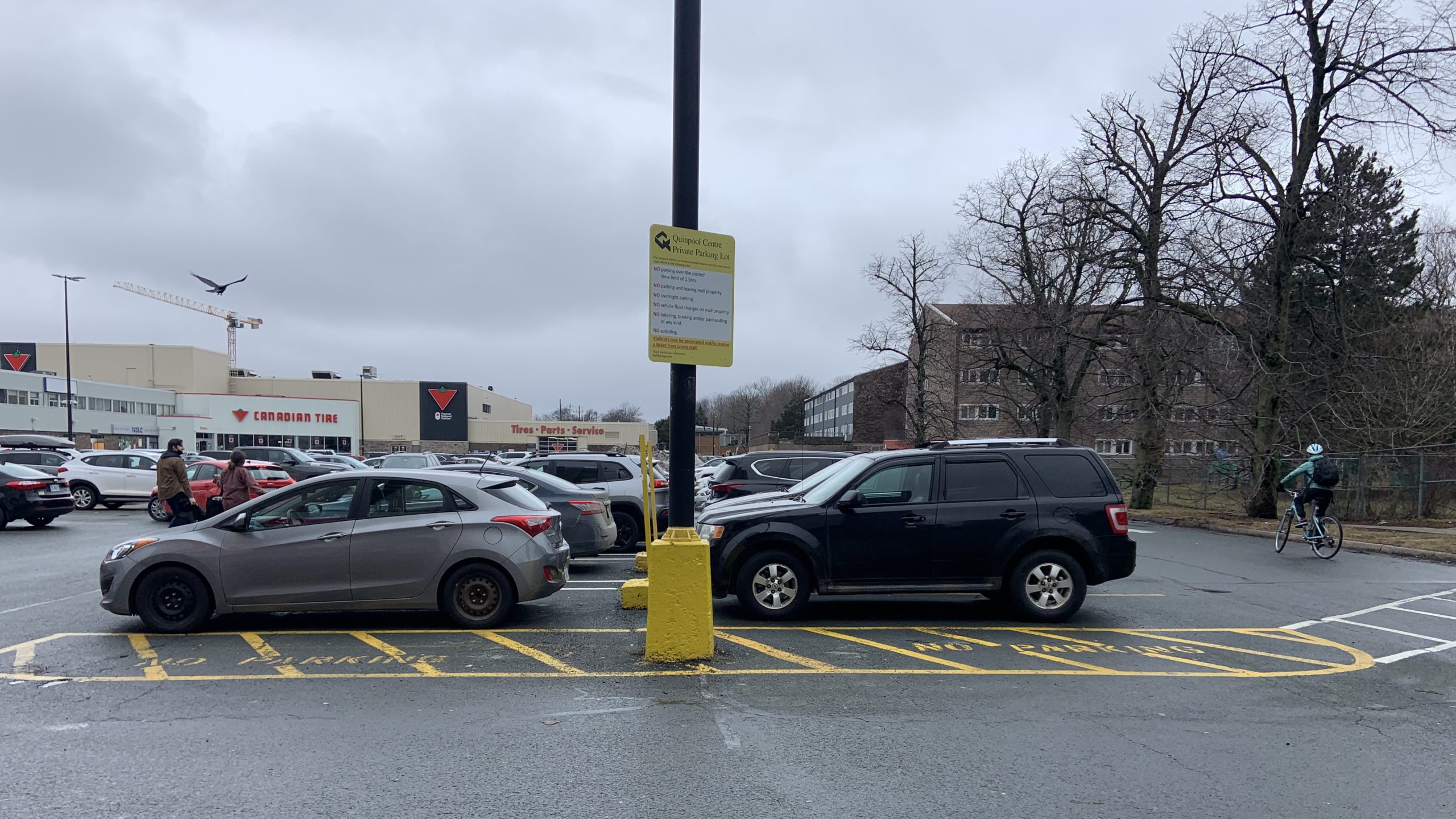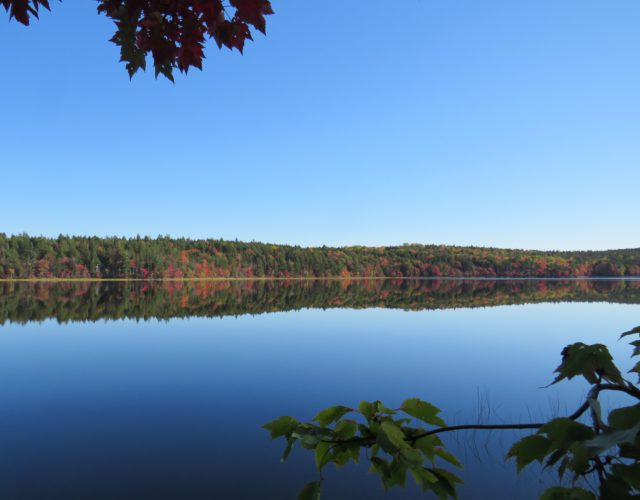The future of parking lots and a proposed park come to Halifax City Hall
“Welcome lots” would redesign parking lots for the future, while advocates want land for a new park in Bedford

caption
Michael Szego says that parking lots should be more sustainable and conscious of pedestrians and active transportation users.Parking lots may be the antithesis to parks, but two advocacy groups showed that they may both be part of Halifax’s greener future.
The municipality’s environment and sustainability standing committee heard two presentations on Thursday: one focused on greener parking lots, and another focused on the long-proposed expansion of Sandy Lake Park. Both align with Halifax’s long-term development and sustainability goals.
Michael Szego is a former advertising executive who now runs Rise to Zero, a consulting firm focused on sustainable, climate-focused development. His presented the idea of “welcome lots,” a reimagined version of the parking lot focused on sustainability and active transportation.
Halifax’s Integrated Mobility Plan is aiming for at least 30 per cent of all transportation trips made in 2031 to be by transit and active transportation. The plan also aims to provide safer mobility for people who use active transportation. Related stories
In his presentation, Szego said that parking lots are usually “hostile environments” for pedestrians and active transportation users.
“They are part of the transportation network, but they are not serving the goals or needs of this transportation network,” said Szego.
He said that improving parking lots is key to achieving a safe, effective, and environmentally-conscious transportation network.
His welcome lots plan has three central elements: permeable pavement, biodiversity, and protective infrastructure.
Studies have shown that permeable pavement reduces the amount of water and pollutants which end up down storm drains and in lakes and rivers. According to Szego, permeable pavement can also improve biodiversity and plant growth around parking lots.
More plant life in and around parking lots can create shade, he said, preventing the “heat island” effect and improving air quality.
Protective infrastructure involves prioritizing active transportation users and pedestrians through creating specialized paths and barriers through the lots, as well as bike racks near entrances.
Szego said that welcome lots are key to completing the city’s transportation priorities, and will lead to a safer, more enjoyable experience for everyone – whether they drive a car or not.
A park at a crossroads
Karen Robinson and Karen McKendry of the Sandy Lake – Sackville River Regional Park Coalition presented about an entirely different subject, but with a similar focus on sustainable development.
The association is focused on the conservation of Sandy Lake Park and adjoining lands in Bedford. They requested a motion to commission an independent, ecology-based study to determine what land around the park needs to be protected. The park currently occupies 1,000 acres. The group is hoping to add that an additional 1,800 acres.
The presentation was the latest development in a quest for conservation that began in 1971, but ramped up in 2013 after a developer clear cut a section of wilderness.
The group wants the land around Sandy Lake protected because of its ecological value. The group points to 11 endangered species, 99 bird species, and wildlife corridors as proof of its importance to wildlife.

caption
Sandy Lake in Oct. 2020.“This park’s future is at a crossroads,” said Robinson.
The fight to conserve the land surrounding the park became more urgent last year, as a developer began construction plans. The group says that the quality of the water in the lake is deteriorating, and they argue that further development could cause the water to deteriorate faster.
Sandy Lake serves as a river head for Sackville River, the largest river that empties into the Bedford Basin.
The new area that group is proposing would protect both spaces around Sandy Lake and running along Sackville river. The group is proposing that the new regional park be renamed Sandy Lake – Sackville River Regional park.
“There’s that strong connection – aquatically – between Sandy Lake and Sackville River,” said McKendry.
McKendry acknowledged the lengthy process for land conservation, but argued that the new development plans make the matter more urgent.
“The vital thing to do now is take action,” she said.
While the committee listened to the two presentations, they did not make any decisions about them at Thursday’s meeting.
About the author
Darrell Roberts
Darrell Roberts is a student journalist from St. John's. He enjoys reading and writing about the latest in culture and politics.

C
Carol Patterson